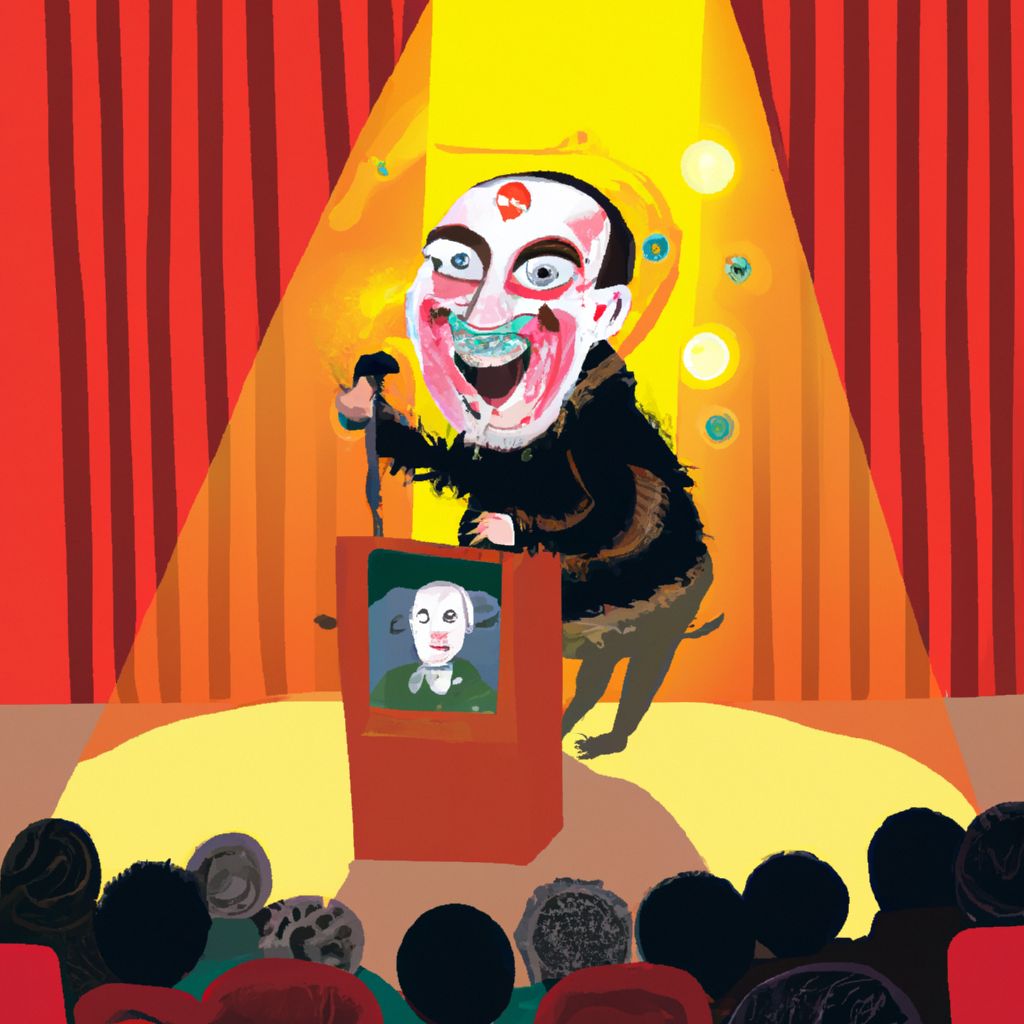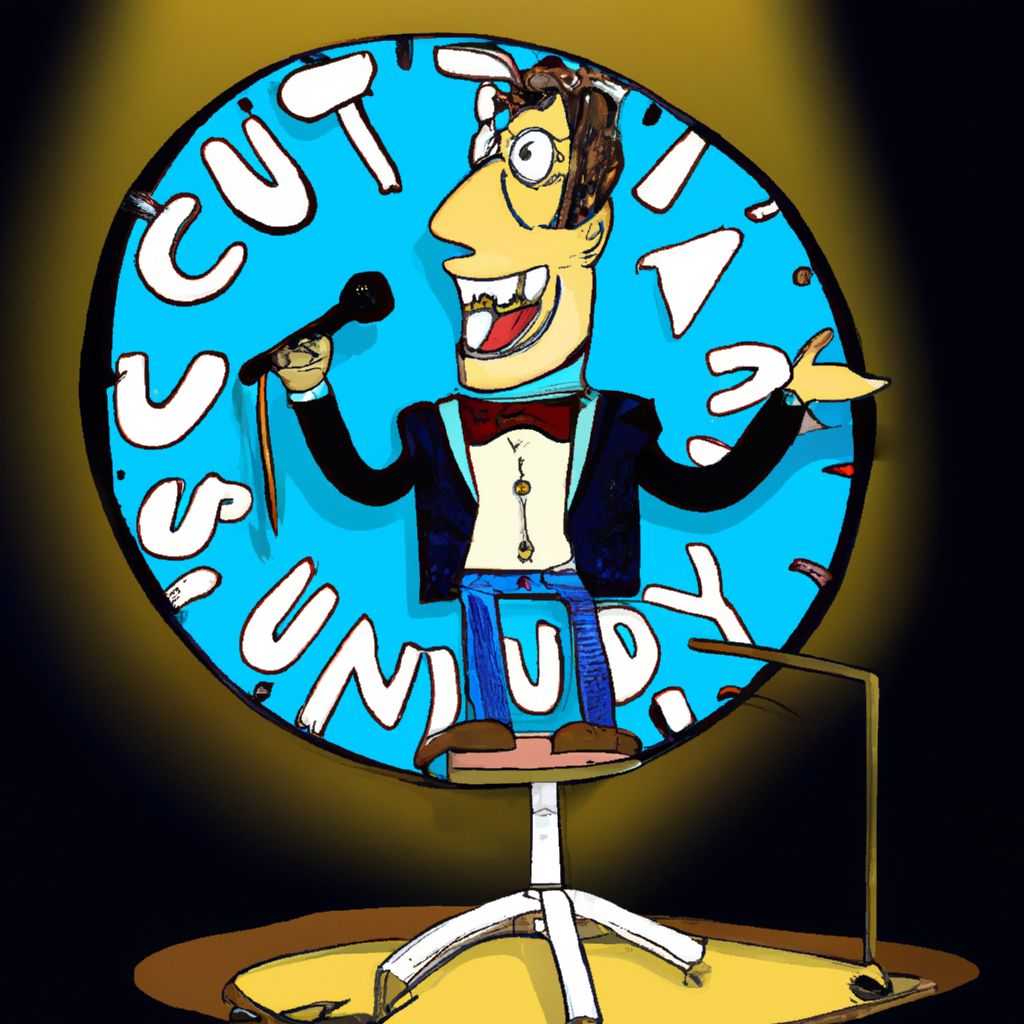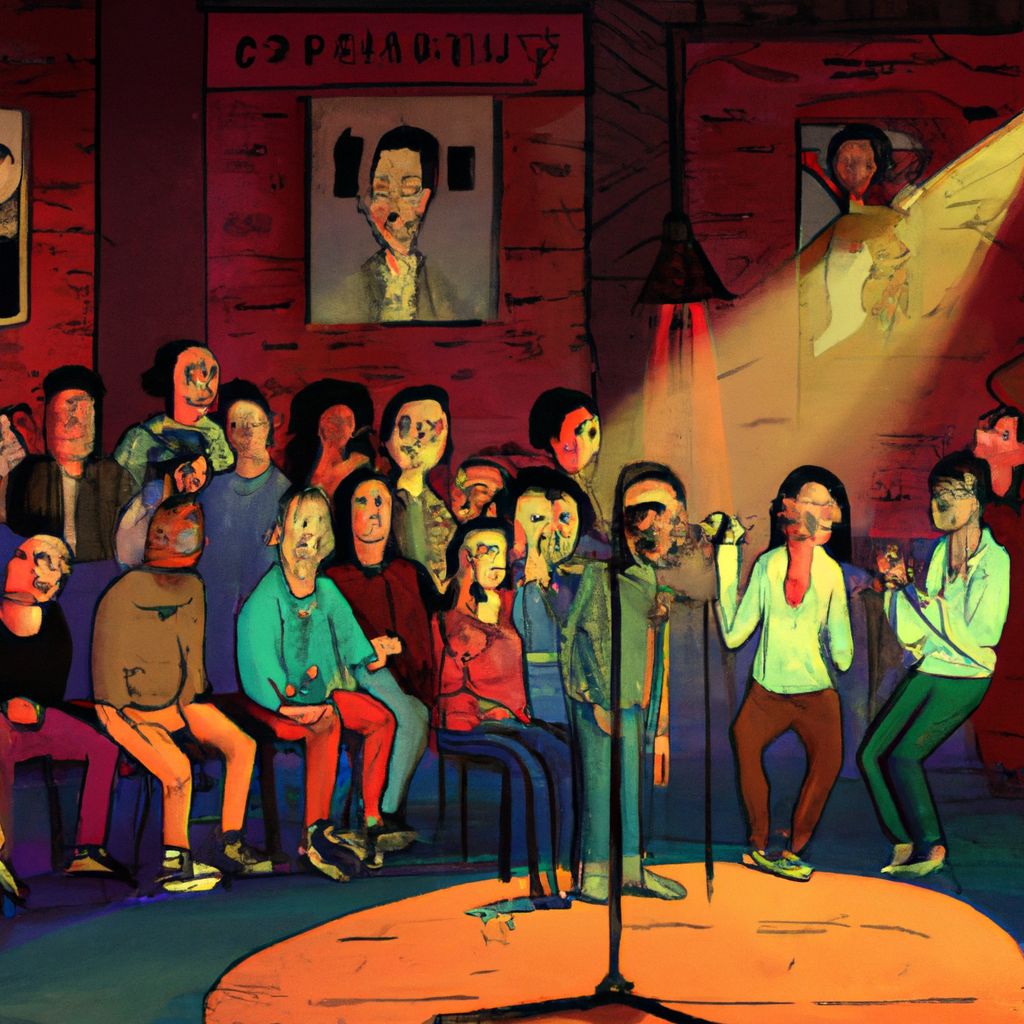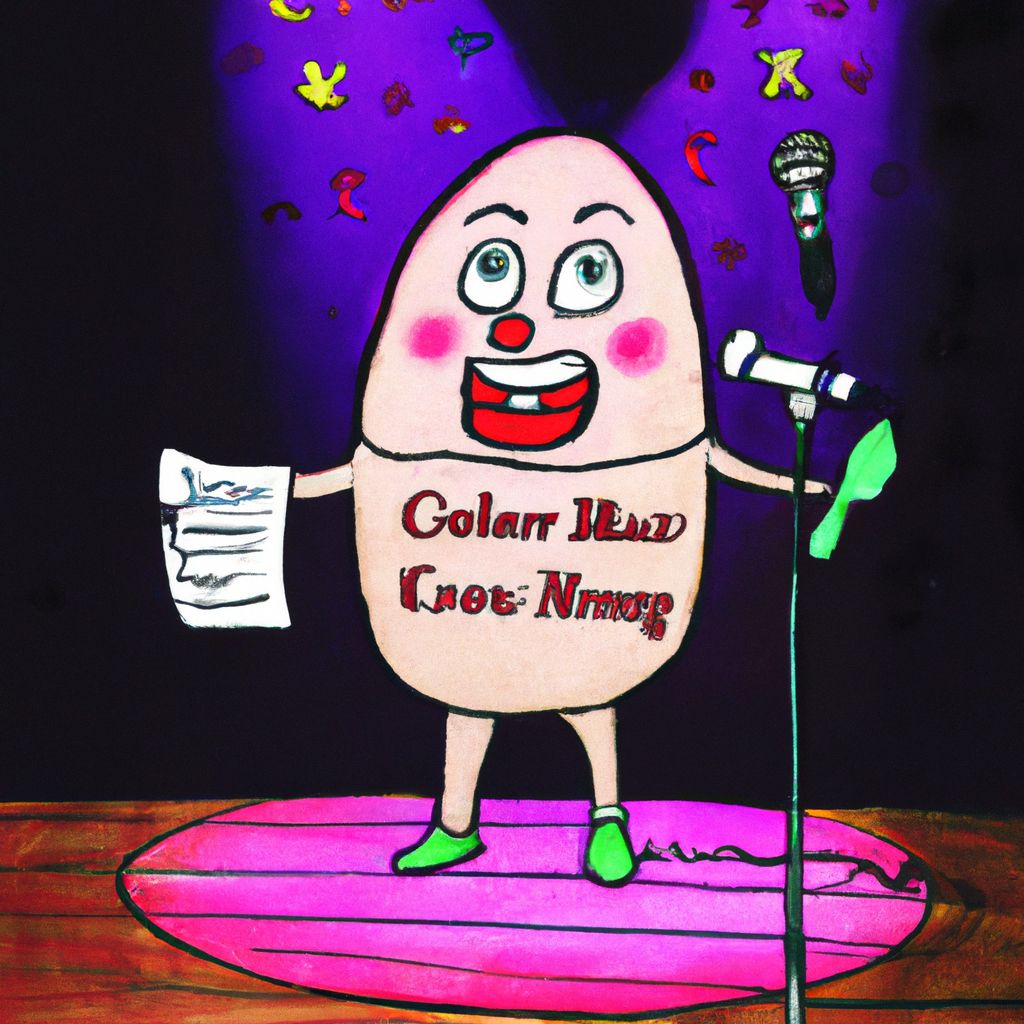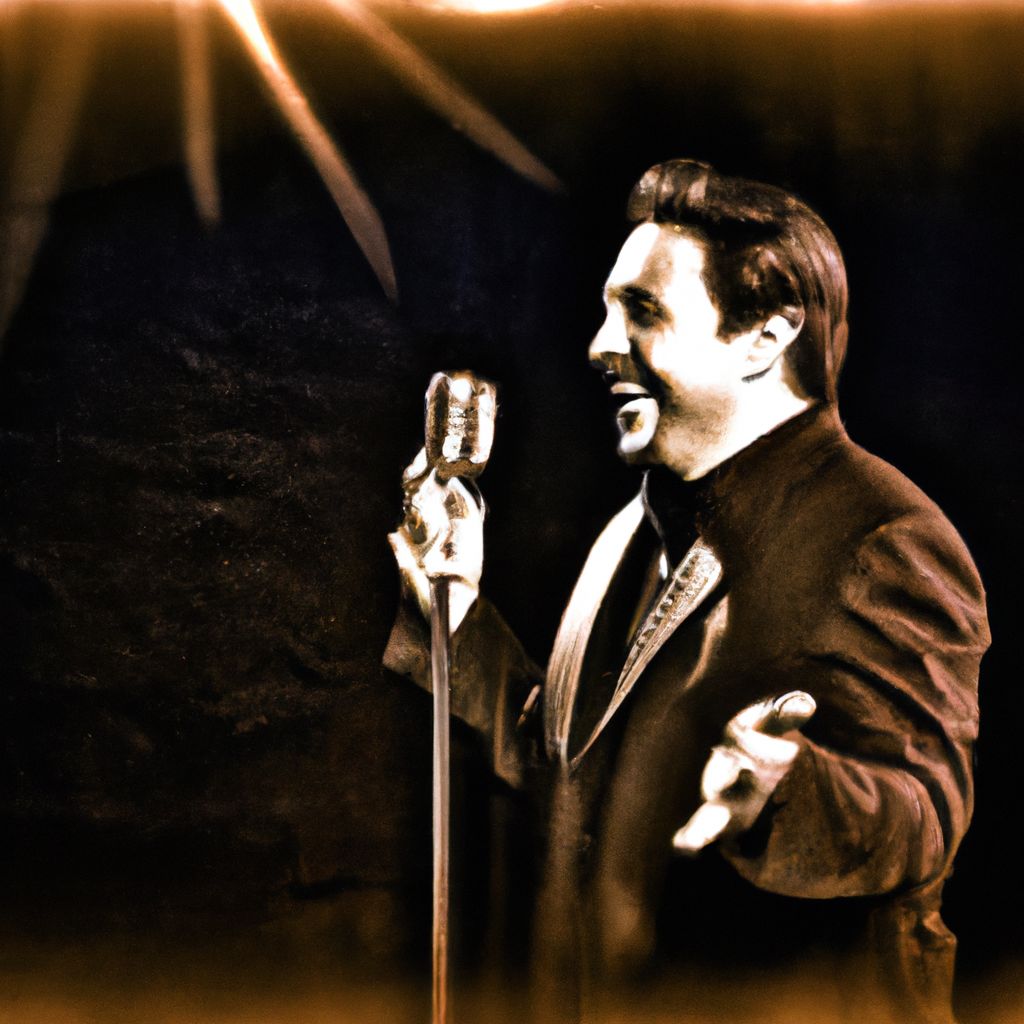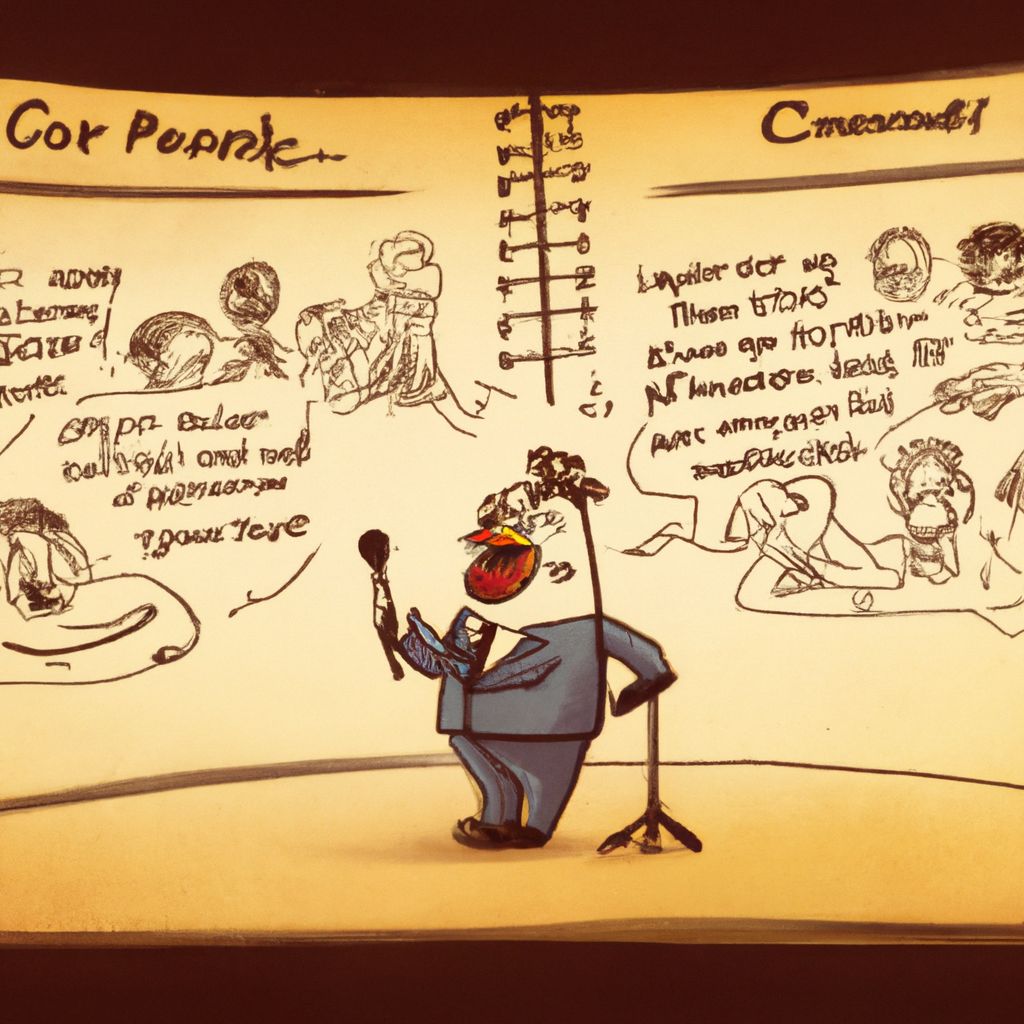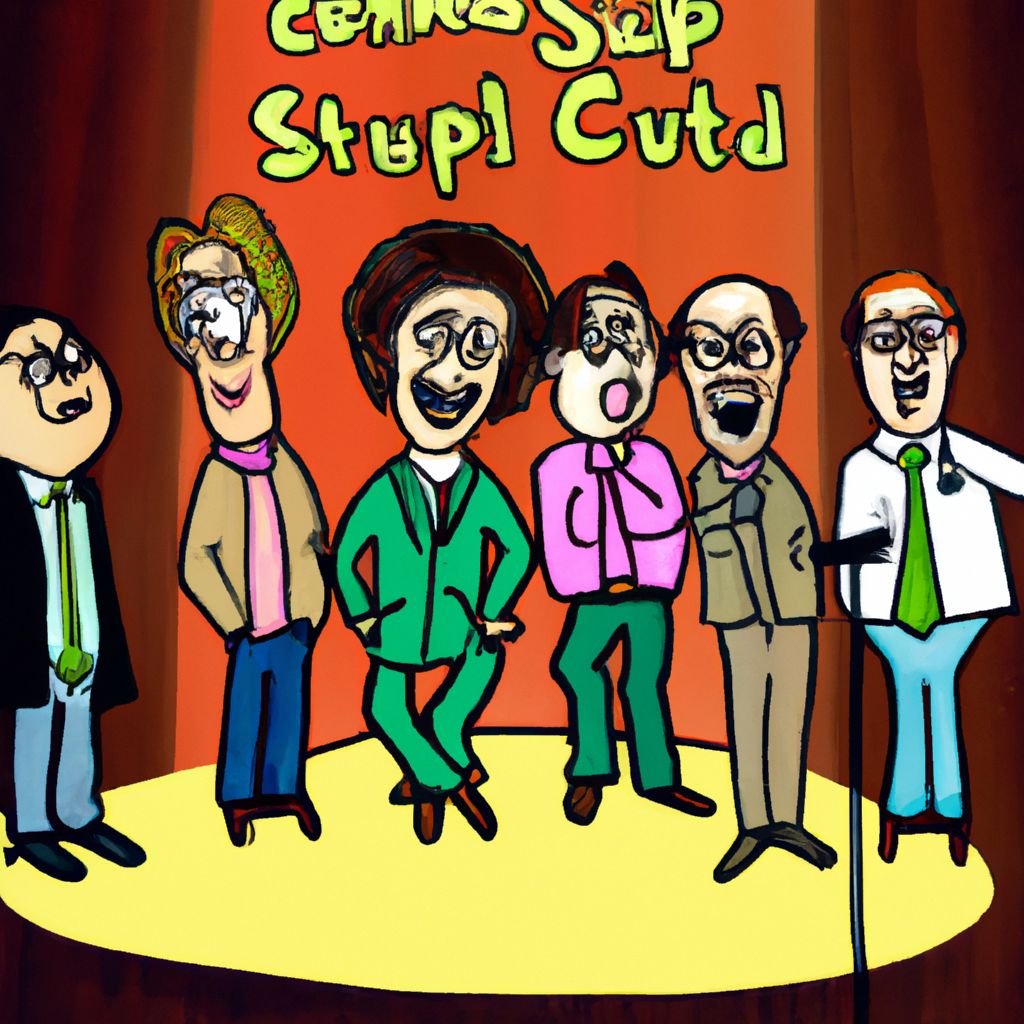- Standup Comedy: Understanding the Essentials
- The Anatomy of a Joke: Timing in Comedy
- Delivery: The Comedian's Voice and Body Language
- Audience Interaction: The Feedback Loop of Timing and Delivery
- Cultural and Contextual Timing in Standup Comedy
- Mastering the Craft: Practice and Adaptation
- The Psychological Impact of Timing and Delivery
- Technology's Influence on Standup: Timing in the Digital Age
Standup Comedy: Understanding the Essentials
Standup comedy stands as a unique and pivotal facet of the entertainment industry, often serving as a barometer for societal attitudes, norms, and the ever-shifting landscape of humor. At its core, standup comedy is an intimate storytelling experience where a performer, armed only with their wit and a microphone, weaves tales and observations designed to elicit laughter from a live audience. The success of a standup performance is deeply rooted in the execution of several key components, with timing and delivery being paramount among them.
The essence of standup comedy is not just in the words spoken but in the rhythm and flow of the performance. Timing, in this context, refers to a comedian's ability to sense the audience's response and to deliver punchlines and pauses at moments that maximize the comedic effect. Delivery, on the other hand, encompasses the nuances of voice modulation, facial expressions, and body language which breathe life into the jokes, transforming mere sentences into vivid, laugh-inducing experiences. Together, timing and delivery form the heartbeat of standup comedy, pumping vitality and resonance into each act.
Tracing back to the vaudeville shows of the late 19th century, standup comedy has evolved through the decades. Vaudeville was a variety show that included comedians delivering monologues, which became the bedrock for modern standup. As the art form matured, it found new homes in nightclubs and theaters of the 20th century. Along this journey, the refinement of comedic timing and delivery became essential as performers like Jack Benny and George Burns honed the art of the pregnant pause and the perfectly-timed retort, influencing generations of comedians to come.
As standup comedy continued to grow, so did the understanding of its intricacies. The latter half of the 20th century saw the rise of comedy clubs and televised standup specials, providing a platform for comedians to experiment with and perfect their craft. It was during this era that the importance of timing and delivery was firmly established as a cornerstone of successful standup, leading to the polished and often seemingly effortless performances we see today.
The Anatomy of a Joke: Timing in Comedy
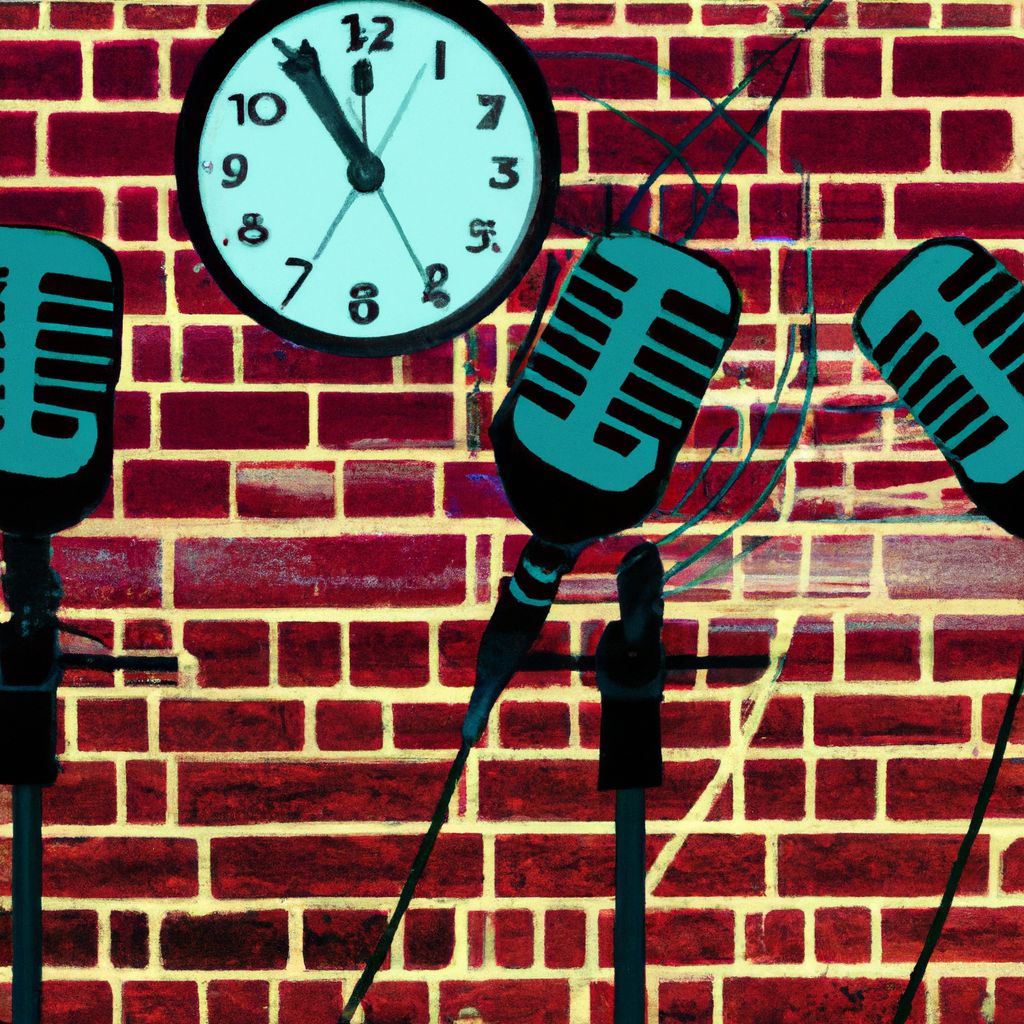
The anatomy of a joke is often as precise and methodical as any literary form. At its simplest, a joke can be broken down into a setup and a punchline. The setup establishes the context and expectation, while the punchline subverts that expectation in a surprising or absurd way, triggering the laugh reflex. However, the bridge between the setup and punchline is where timing comes into play, acting as the critical element that can make or break the humor.
Comedic timing is an elusive art, a symphony of pacing, pauses, and rhythm that comedians use to increase the impact of their jokes. Timing involves controlling the speed at which a joke is delivered, knowing when to pause for effect, and determining the exact moment to reveal the punchline. It's akin to a musical performance where tempo and silence hold as much power as the notes themselves.
The 'rule of three', a classic writing principle, is often employed in comedy. It's based on the pattern that people tend to find a sequence of three elements satisfying and effective. In joke-telling, the first two items in a sequence establish a pattern, while the third subverts it. The slight delay before the twist—the third element—builds tension, which is then released by the unexpected turn, producing laughter.
Renowned comedians like timing maestro Jack Benny and the sharp-witted Lucille Ball have utilized pauses to great effect, allowing audiences to anticipate the punchline, then delivering it at a moment that is just slightly unexpected. Contemporary comedians, such as Dave Chappelle, exemplify this as well. Chappelle's jokes often feature a relaxed, conversational pace that lulls the audience into a sense of comfort, only to surprise them with a punchline that lands with precise timing.
Analyzing a classic joke from a comedian like Chappelle might reveal a structure like this:
"I told the police officer, 'Of course I have my driver's license. It's right there on the back bumper, since I wrapped my car around a tree.'"
Here, the setup hints at a routine traffic stop, but the punchline takes an unexpected detour, delivered right after a calculated pause, catching the audience off guard and enhancing the comedic effect. This masterful control of timing ensures that the audience is primed to react at the optimal moment, making the joke resonate more powerfully.
Delivery: The Comedian's Voice and Body Language
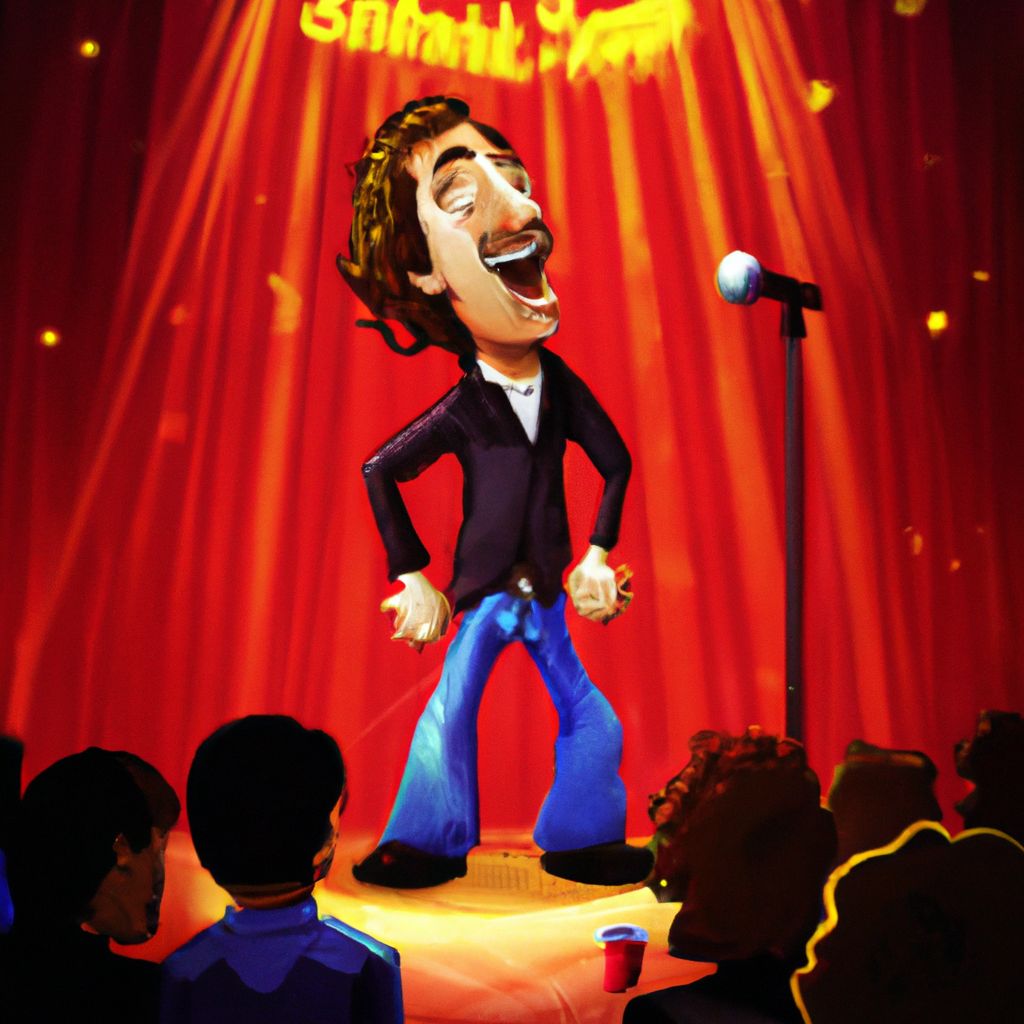
Delivery in standup comedy is the vessel through which the material reaches an audience, and it is as critical as the content itself. The tone of voice, inflection, facial expressions, and body language of a comedian all contribute to the narrative of the joke, accentuating punchlines and enhancing storytelling. A monotone delivery might signal deadpan humor, while an animated tone can heighten the absurdity of a situation. The inflection, or the rise and fall of the voice, can create expectation and emphasize certain words or phrases, steering the audience's perception of the joke.
Facial expressions and body language serve as visual cues that support the verbal punchline, often acting as a punchline themselves. Jim Carrey, for instance, is famous for his rubber-faced expressions and dynamic gestures, which amplify his jokes and create a memorable stage persona. Similarly, someone like Steven Wright employs minimal body language and a stoic expression, which perfectly complements his dry, ironic humor.
For comedians looking to improve their delivery, the following tips might prove invaluable:
- Record and review performances to observe and refine vocal tone and physical presence.
- Practice in front of a mirror or with a trusted confidant to get feedback on facial expressions and gestures.
- Vary the tone and pace during delivery to maintain audience interest and control the comedic rhythm.
- Experiment with different styles of delivery to find what feels most authentic and resonates best with audiences.
A comedian's unique style of delivery is their signature, often setting them apart from their peers. It's the reason audiences can distinguish a Rodney Dangerfield one-liner from a Mitch Hedberg non sequitur. Dangerfield's self-deprecating humor was delivered with a nervous energy and a quick pace, while Hedberg's laid-back, almost shy delivery allowed his clever one-liners to unfold in the listener's mind with a delayed tickle of humor.
Ultimately, the impact of a comedian's delivery style on their performance cannot be overstated. It's the conduit for their personality and comedic viewpoint, and when executed well, it turns a set from a mere recitation of jokes into a compelling, laugh-inducing narrative that resonates with the audience long after the show has ended.
Audience Interaction: The Feedback Loop of Timing and Delivery

The dynamic between a standup comedian and their audience is a delicate feedback loop where audience reactions can significantly influence a comedian's timing and delivery. Seasoned comedians often read the room, gauging the mood and energy level of the audience to tailor their performance accordingly. This real-time adjustment is a skill honed through experience and careful observation.
Reading the room involves paying attention to nonverbal cues from the audience, such as laughter, applause, or silence, and adjusting the pace, tone, or direction of the performance. Comedians might slow down their delivery to build anticipation or speed up to match the audience's energy. They may also change the order of their material, opting for more relatable content if certain jokes aren't landing as expected.
Techniques for engaging with the audience include:
- Starting with crowd work to establish a rapport and gather insights about the group's temperament.
- Employing call-and-response or direct questions to create a participative atmosphere.
- Observing which topics or styles of jokes garner the strongest reactions and steering the act in that direction.
- Being prepared with a repertoire of alternative material or improvisational skills to pivot as needed.
Anecdotes from famous comedians often reveal how crucial audience interaction is. Chris Rock, for instance, has been known to test new material in smaller clubs, refining his jokes based on the immediate feedback from the audience. He adjusts his delivery and timing based on which lines get laughs and which fall flat, using the audience as a litmus test for his performance.
Another example is Joan Rivers, who was known for her sharp wit and ability to interact with the audience. She would often respond to hecklers with lightning-fast comebacks, using such interactions to fuel her performance and demonstrate her comedic agility. These spontaneous moments often became memorable highlights of her act, showcasing her skill in using audience feedback to enhance her timing and delivery.
For comedians, the audience is both a sounding board and a collaborative partner in the comedic process. By mastering the art of audience interaction, comedians can create a more engaging and adaptive performance that resonates on a deeper level, making each show a unique experience.
Cultural and Contextual Timing in Standup Comedy
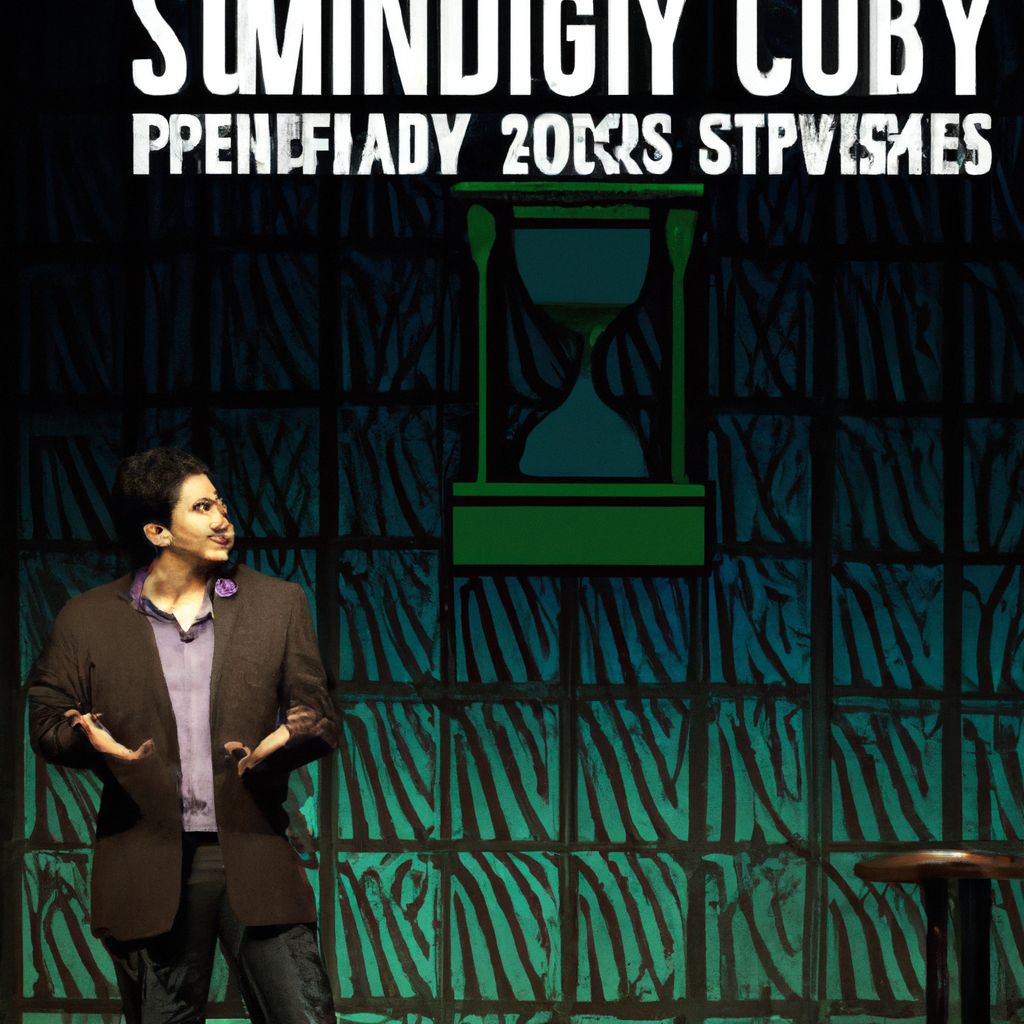
Standup comedy is not created in a vacuum; rather, it is deeply intertwined with the cultural context and current events of the time. The timing of jokes and their delivery must often be attuned to the zeitgeist to ensure they resonate with audiences. Comedians must navigate a landscape where societal norms, political climates, and global events shift, which can affect the perception and reception of their material.
The importance of relevance in comedy cannot be overstated. Jokes that tap into the shared experiences and collective consciousness of an audience tend to have a more significant impact. Comedians such as George Carlin and Richard Pryor leveraged their understanding of the cultural context to tackle issues like politics and race, infusing their comedy with insight and nuance that went beyond mere humor.
Relatability is equally critical. Audiences are more likely to respond positively to material they can connect with on a personal level. This is why comedians often tailor their jokes to reflect the demographics, cultural background, and sensibilities of their audience. When performing internationally or for diverse groups, comedians might adjust references and language to bridge cultural gaps and build a rapport with their audience.
Comedians also have to strike a delicate balance when it comes to timing their material around current events. A joke about a news item can be seen as cutting-edge and topical if delivered at the right moment but can also come off as insensitive or outdated if the timing is off. The context in which a joke is delivered plays a significant role in how it is received. For example, comedic commentary during an election year may be more pointed and receive greater engagement due to the public's heightened interest in political humor.
In addition to cultural and contextual timing, the physical setting can influence a comedian's performance. Material that works in a small, intimate club may not translate to a large theater or an outdoor festival. Comedians must be adept at reading these environments and adjusting not just their content but their delivery style to suit the venue's atmosphere.
Ultimately, a comedian's ability to weave cultural and contextual awareness into their timing and delivery is a testament to their skill as a performer. It requires a keen understanding of both their audience and the wider world, ensuring that their comedy is not only humorous but poignant and pertinent.
Mastering the Craft: Practice and Adaptation
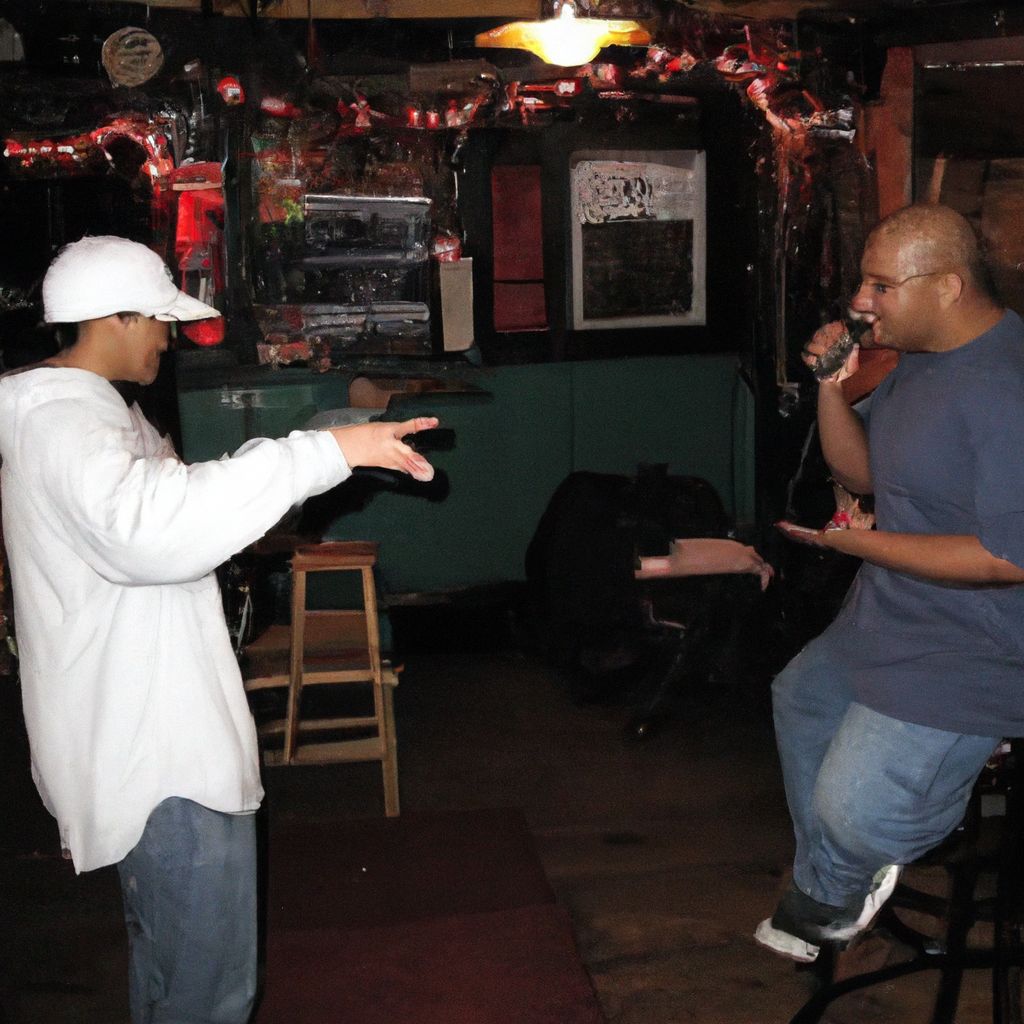
For aspiring comedians, mastering the craft of standup comedy is a journey of practice, adaptation, and continuous learning. Timing and delivery are skills that can be honed through dedication and persistence. Here are some strategies to help up-and-coming comedians develop their comedic prowess:
Attending workshops and comedy classes can provide valuable insights into the mechanics of joke construction and performance. These settings often offer a safe space to experiment with timing and delivery, receive constructive feedback, and learn from seasoned professionals.
Participating in open mics is crucial. They serve as a litmus test for new material and allow comedians to practice their sets in front of a live audience. Open mics can be unforgiving, but they are instrumental in teaching comedians how to read the room and adjust their performance in real-time.
Recording performances is another vital practice tool. By reviewing recordings, comedians can critically analyze their timing and delivery, identify areas for improvement, and track their progress over time. Watching these performances can reveal patterns in audience responses that might otherwise go unnoticed during the adrenaline of a live show.
Persistence is key in the world of standup comedy. The path is often paved with difficult sets and tough crowds, but each experience is an opportunity to learn and grow. Adaptation is equally important; what works one night may not work another, and comedians must be flexible and willing to tweak their acts to achieve success.
Continuous learning is part of the evolution of a comedian. By staying informed about current events, tuning into cultural trends, and observing the work of comedy peers, comedians can keep their material fresh and relevant. Engaging with a wide range of comedic styles can also inspire new approaches to timing and delivery.
Ultimately, while natural talent plays a role, the art of standup comedy is largely a craft built on hard work and resilience. Aspiring comedians must commit to refining their timing and delivery, embracing the iterative process of performing, learning, and adapting to master the stage and connect with their audience.
The Psychological Impact of Timing and Delivery
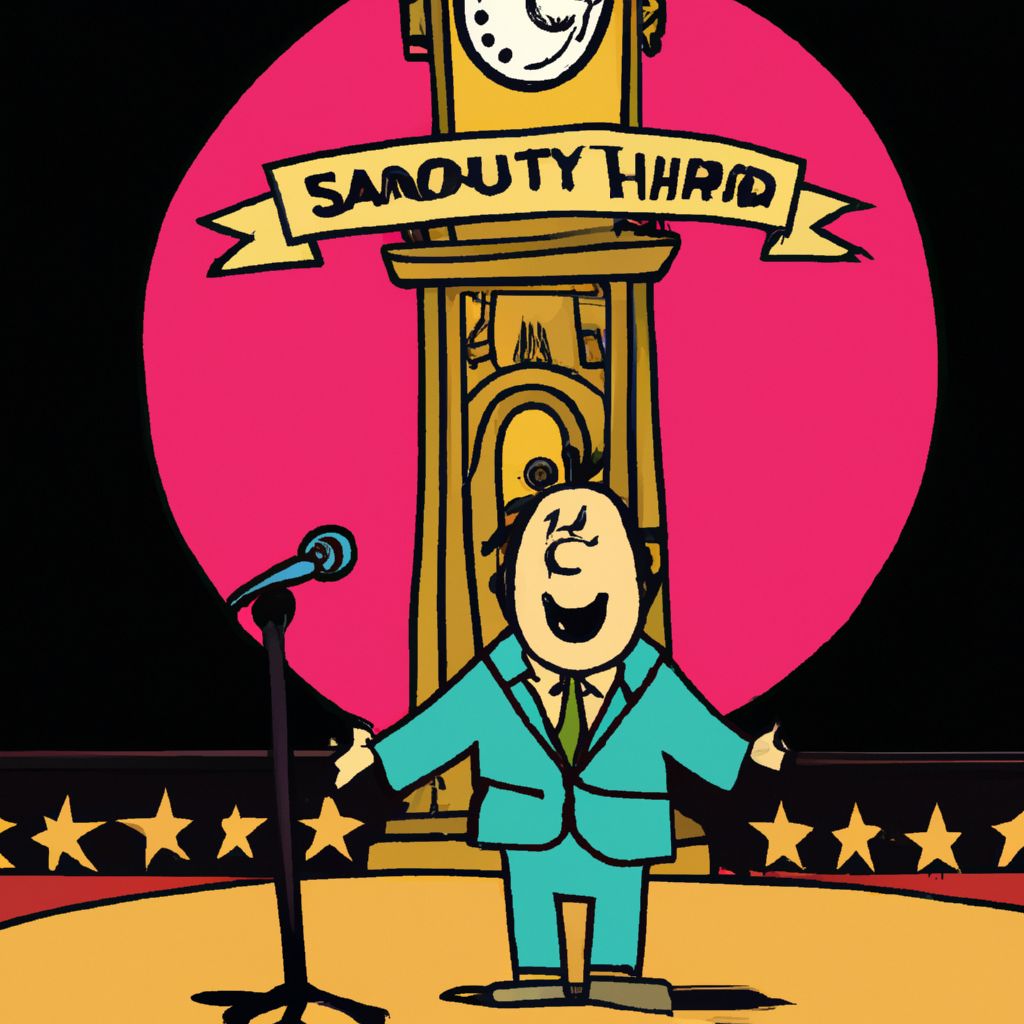
The psychological underpinnings of humor reveal why timing and delivery are so effective in eliciting laughter. Humor experts and psychologists have long studied the cognitive and emotional responses to comedy, producing several theories and insights into why we find things funny and how comedians can manipulate these reactions through their craft.
One influential theory is the incongruity-resolution model, which suggests that humor arises when there is a discrepancy between what is expected and what actually occurs, with the resolution of this incongruity triggering laughter. Timing plays a crucial role in creating and resolving these incongruities. A well-timed pause can heighten the sense of anticipation and make the punchline more surprising, enhancing the comedic effect.
Delivery, encompassing a comedian's tone of voice, facial expressions, and body language, engages both cognitive and emotional processes. The Superiority Theory of humor, proposed by philosophers like Plato and Aristotle, posits that feeling superior to a person or situation can lead to laughter. Through confident and controlled delivery, comedians can establish themselves as the 'alpha' in the room, making the audience more receptive to their humor.
Furthermore, studies have shown that laughter is a social signal, and people are more likely to laugh in groups than when they are alone. A comedian's delivery can create a sense of inclusivity, making each member of the audience feel part of a collective experience, thereby amplifying the laughter response.
Psychologist Robert Provine conducted studies that emphasize the social aspects of laughter and found that the majority of laughter does not follow jokes but rather normal statements and social interactions. This suggests that delivery—how something is said, with the accompanying nonverbal cues—is often more important than the content of what is being said.
Additionally, the Benign Violation Theory, introduced by Peter McGraw and Caleb Warren, provides insight into how comedians walk the line between offensive and humorous. It states that for something to be funny, it must violate some kind of norm but still be perceived as non-threatening. Delivery is crucial here; the way a comedian presents a joke can defuse potential offense and frame the violation as acceptable and amusing.
In essence, the psychological impact of timing and delivery in standup comedy lies in their ability to manipulate cognitive mechanisms and social dynamics to maximize humor. By understanding and applying these psychological principles, comedians can craft performances that resonate on a deeper level, tapping into the instinctual human response to laughter.
Technology's Influence on Standup: Timing in the Digital Age
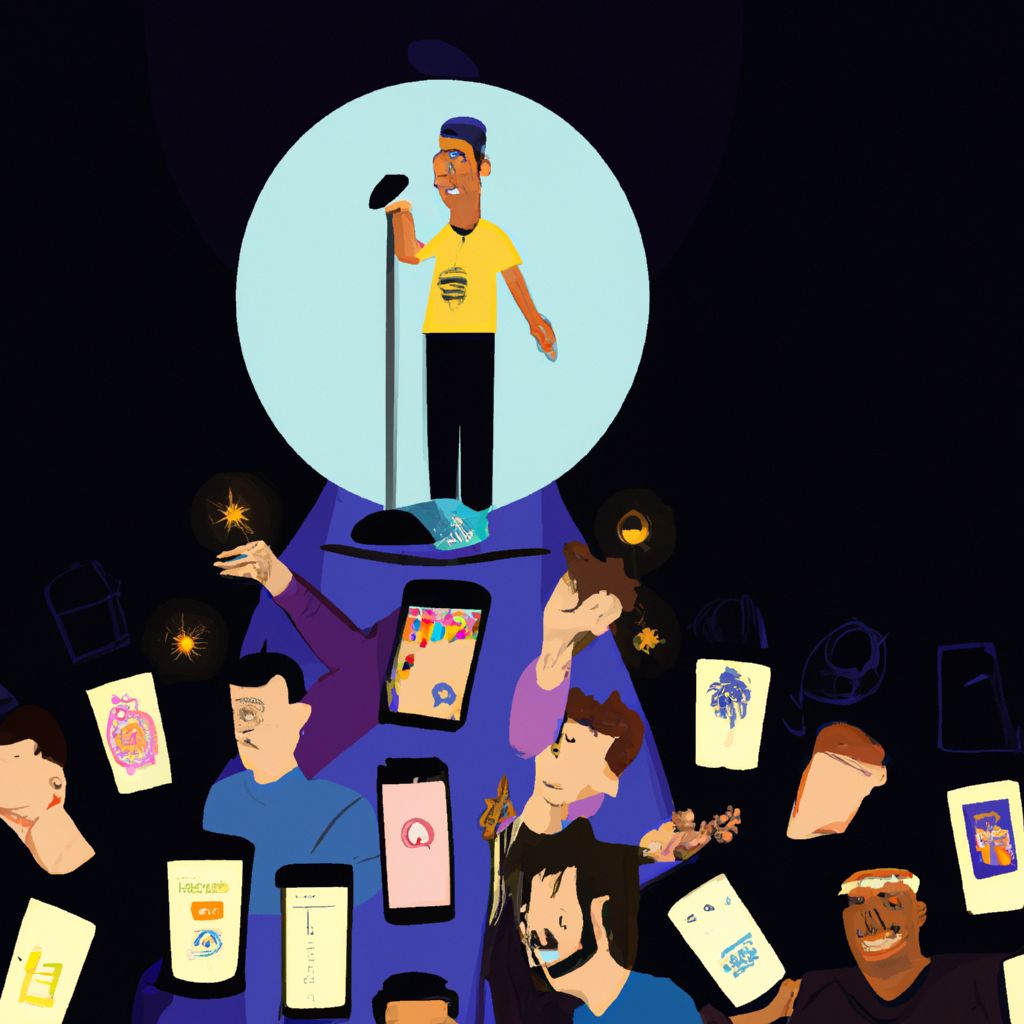
The advent of technology has markedly influenced the landscape of standup comedy, particularly in the realms of timing and delivery. Social media, podcasts, and streaming services have not only changed how comedians connect with their audience but have also transformed the way in which comedic timing and delivery are developed and showcased.
Social media platforms like Twitter, Instagram, and TikTok have introduced new formats and constraints that comedians must navigate. The brevity required by Twitter, for instance, has led comedians to refine their punchlines with a sharp focus on timing, condensing humor into 280 characters or less. Instagram and TikTok, being visual mediums, have allowed comedians to experiment with facial expressions and body language, sometimes without spoken words, to convey humor effectively within a matter of seconds or minutes.
Podcasts have become a fertile ground for comedians to explore timing and delivery in a more conversational and long-form context. Without the immediate feedback of a live audience, comedians have to rely on their instincts and rapport with co-hosts or guests to gauge the pacing of their stories and jokes. This platform has also provided comedians with the opportunity to dissect the craft of comedy in a candid manner, discussing the nuances of timing and delivery with peers.
Streaming services like Netflix, Hulu, and Amazon Prime have revolutionized the distribution and consumption of standup specials. The global reach of these platforms means comedians can reach diverse audiences, making the understanding of cultural timing and delivery even more critical. Additionally, the ability to pause, rewind, and rewatch performances allows viewers to engage with standup in a non-linear fashion, which can affect the perception of timing and delivery.
These digital platforms also provide comedians with immediate and often quantifiable feedback through likes, shares, comments, and view counts, giving them a different kind of audience insight than live performances do. This data can influence how comedians refine their timing and delivery for digital audiences.
Overall, technology has expanded the avenues through which comedians can express their craft, necessitating an adaptation in their approach to timing and delivery. While the core principles of comedic timing remain unchanged, the methods of execution continue to evolve with the digital landscape, offering comedians new challenges and opportunities to connect with their audience.


